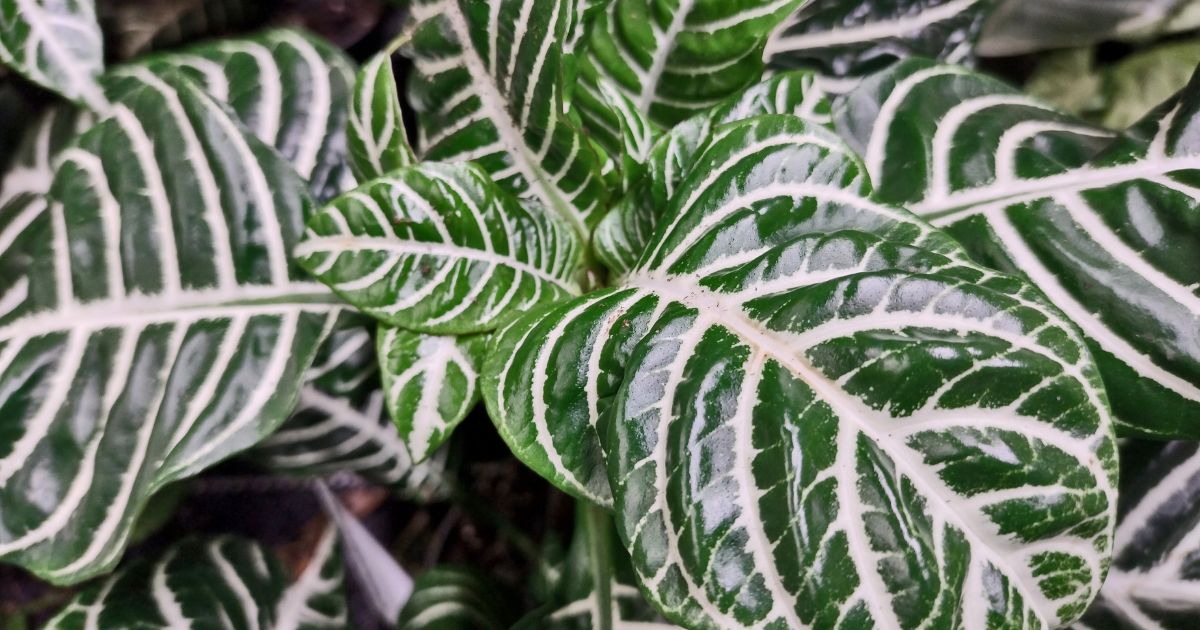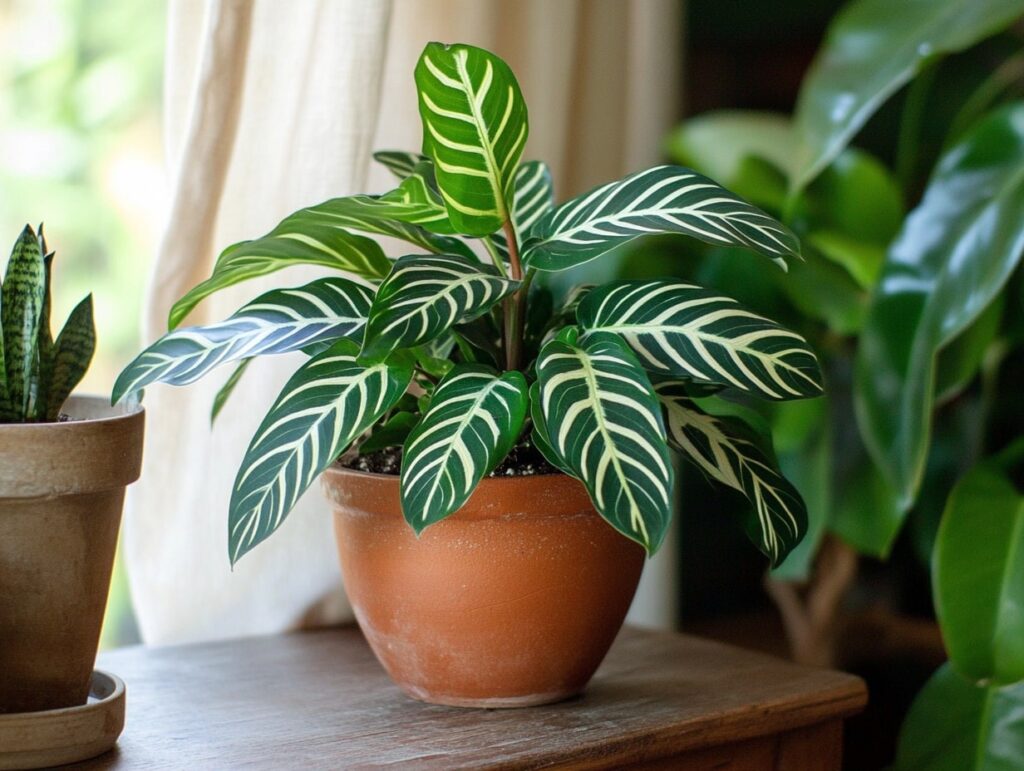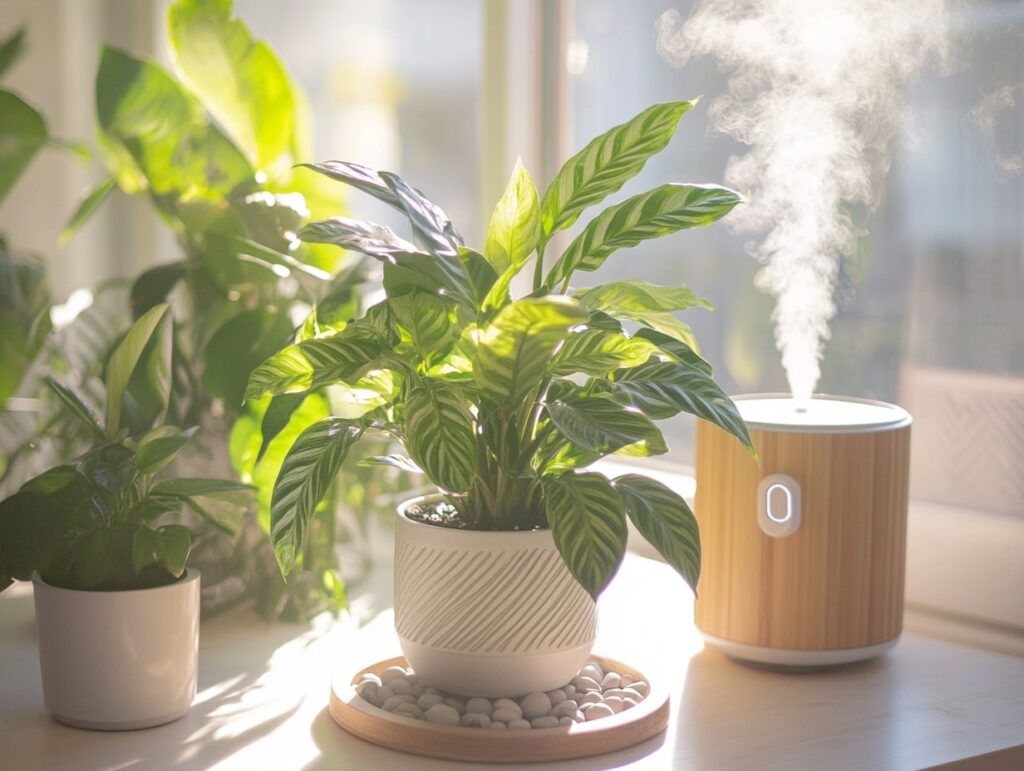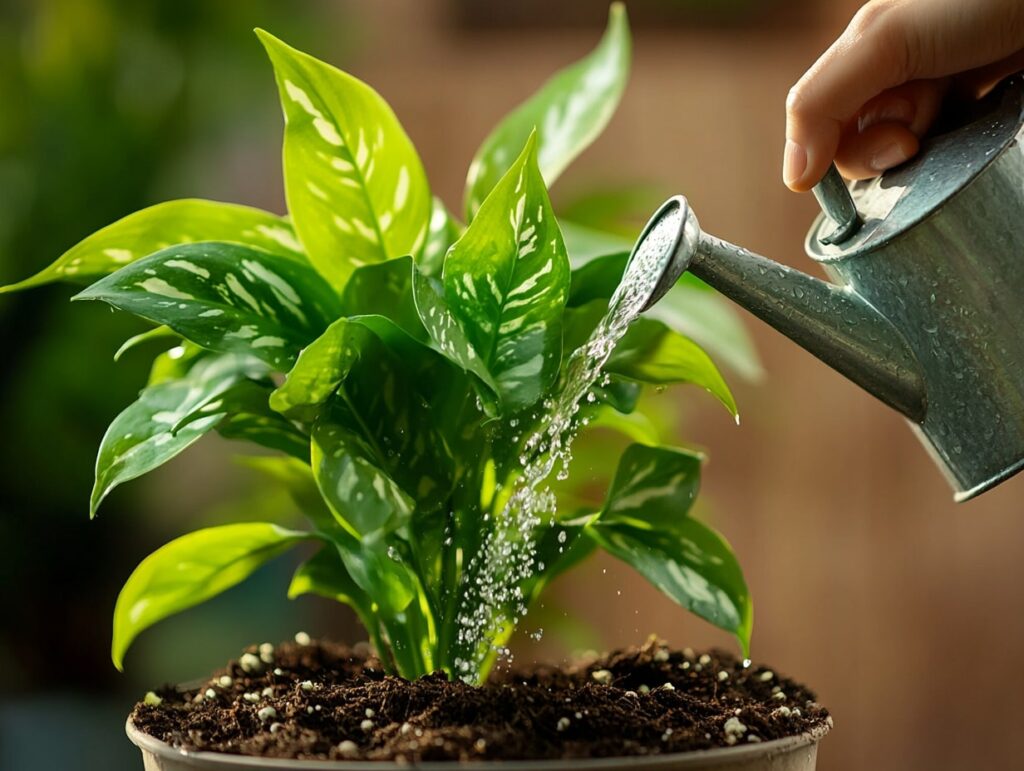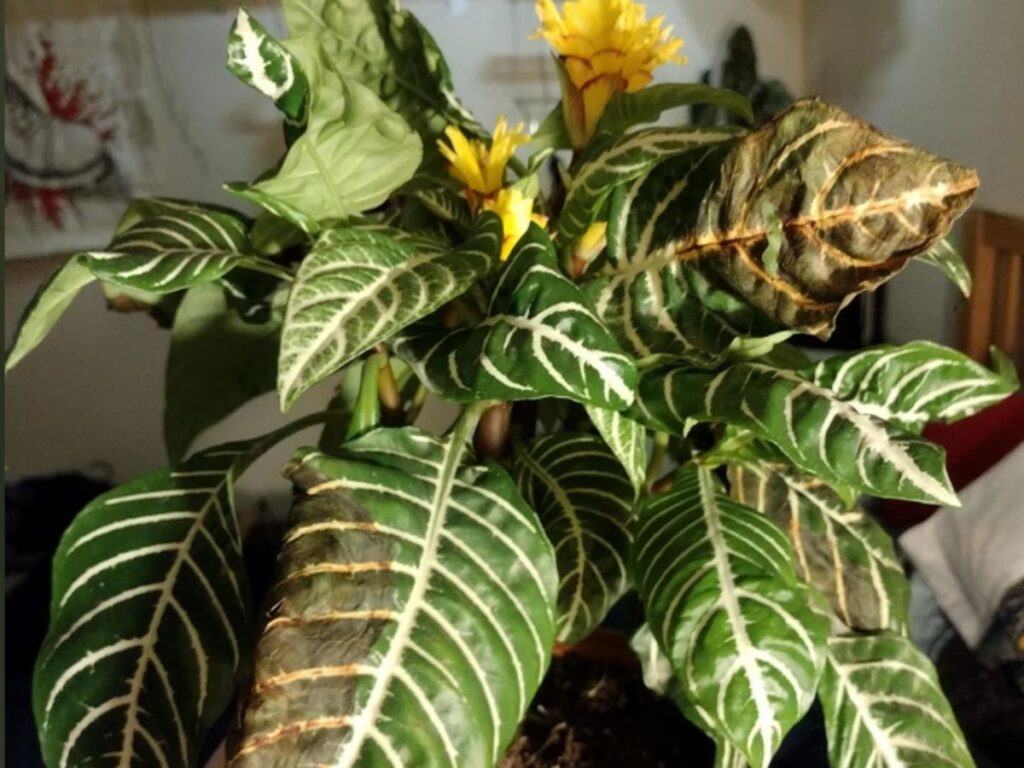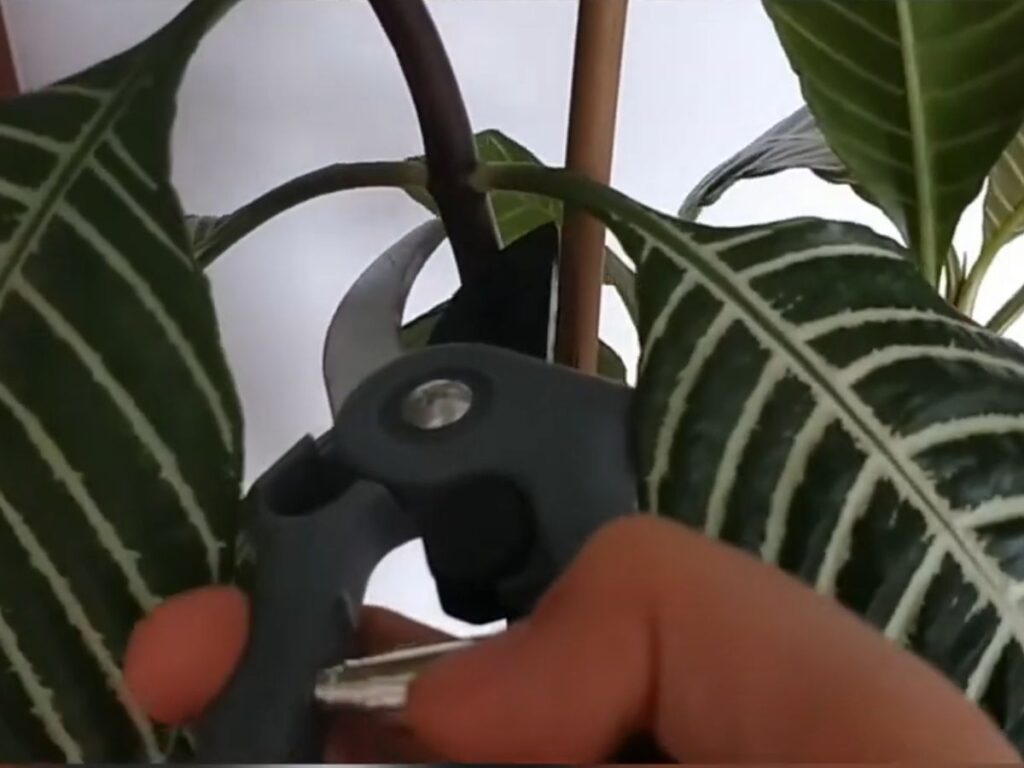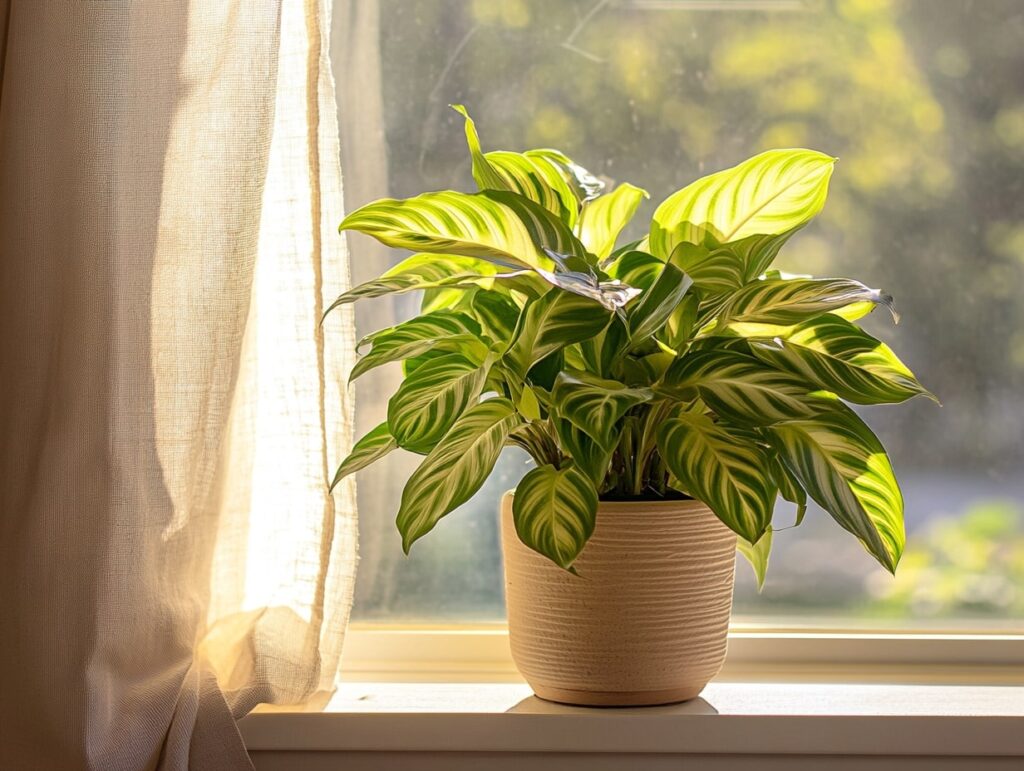If you’re looking to add a touch of bold elegance to your indoor garden, look no further than the captivating Zebra Plant. With its striking striped leaves and lush green foliage, this unique plant can transform any room into a vibrant, exotic oasis.
But beyond its beauty, there’s more to this quirky plant—it promises a rewarding journey for plant lovers, whether you’re a seasoned gardener or just starting out.
Imagine having a pop of bright yellow flowers blooming right in your home—yes, the Zebra Plant can surprise you with its blossoms, but only if you give it the care it deserves. Intrigued?
Don’t worry, maintaining the ideal conditions is simpler than you think. With the right balance of indirect light, consistent watering, and a dash of humidity, your Zebra Plant will thrive.
Whether you’re struggling with other houseplants or just want to elevate your indoor greenery, the Zebra Plant offers a fresh start.
It’s a manageable companion even for beginners, so if you’re ready to bring a touch of the extraordinary into your space, let’s dive into how you can make your Zebra Plant not just survive, but flourish.
Starting with the Basics: What Is a Zebra Plant?
A Zebra Plant is a tropical plant known for its striking foliage. Its scientific name is Aphelandra squarrosa. Native to Brazil, this plant is prized for its dark green leaves with bold white stripes, resembling a zebra’s pattern.
Zebra Plants are primarily grown indoors due to their need for controlled conditions. They thrive in bright, indirect light and high humidity.
These plants usually produce bright yellow flowers during the late summer and early fall. While the flowers are beautiful, the foliage remains the primary attraction.
To summarize its main characteristics:
| Feature | Description |
|---|---|
| Scientific name | Aphelandra squarrosa |
| Origin | Brazil |
| Light needs | Bright, indirect light |
| Humidity | High |
| Flower color | Bright yellow |
Zebra Plants also have a unique growth habit. They can grow up to 12 inches tall indoors, making them suitable for tabletops or shelves.
Remember, this plant thrives on attention. Keep it away from drafty spots and ensure soil remains moist but not waterlogged.
In short, if you’re looking for an eye-catching houseplant with distinctive foliage, the Zebra Plant is an excellent choice.
Optimal Growing Conditions
To successfully grow a Zebra Plant indoors, you need to ensure proper lighting, maintain specific temperature and humidity levels, and choose the right soil mix.
Lighting Requirements
Zebra Plants thrive in bright, indirect light. Place them near a window that gets filtered sunlight, such as through a sheer curtain. Avoid direct sunlight as it can scorch the leaves, leading to browning and wilting.
If natural light is insufficient, consider using fluorescent grow lights. Position the lights about 6-12 inches from the plant, and aim for 12-14 hours of light daily. Rotate the plant occasionally to ensure even growth on all sides.
Temperature and Humidity
These plants prefer a consistent temperature range of 65-75°F (18-24°C). Avoid placing them near drafty windows, air conditioners, or heaters, as sudden temperature changes can stress the plant.
Humidity is crucial. Aim for a humidity level of 60-70%. You can increase humidity by misting the leaves daily, using a humidifier, or placing the pot on a tray filled with water and pebbles. Grouping plants together can also help maintain a higher humidity level.
Choosing the Right Soil
Zebra Plants require well-draining soil. Use a peat-based potting mix with added perlite or coarse sand to improve drainage. A typical mix could be 2 parts peat moss, 1 part perlite, and 1 part sand.
Ensure the pot has drainage holes to prevent waterlogging, which can lead to root rot. Repot the plant every 2-3 years to refresh the soil and provide more room for growth.
Planting and Repotting
Proper planting and timely repotting are crucial for a healthy Zebra Plant. Choose the right pot and know when to repot to ensure your plant thrives.
When to Repot
Zebra Plants typically need repotting every 2-3 years. You can tell it’s time when roots start to outgrow the pot or appear through the drainage holes. Spring is the best season for this task since the plant is actively growing.
When repotting, gently remove the plant from its pot. Loosen the root ball carefully and trim any dead or overly long roots. Prepare a fresh potting mix rich in organic matter and place the plant into a new container, ensuring it’s at the same depth as before.
Pot Selection Tips
Choose a pot with drainage holes to prevent waterlogging. Terracotta pots work well as they allow moisture to evaporate and keep the soil slightly drier. The new pot should only be 1-2 inches larger in diameter than the old one.
Ensure the pot is clean to avoid transferring diseases or pests. Add a layer of gravel or broken pottery at the bottom for extra drainage. Always use a potting mix suitable for tropical plants to maintain proper moisture levels.
Watering and Feeding
Proper watering and feeding are crucial for maintaining the health of your Zebra Plant. Focus on a consistent watering schedule and a balanced fertilization routine to keep the plant vibrant.
Watering Schedule
Zebra Plants thrive with consistent moisture. Water them when the top inch of soil feels dry. Insert your finger into the soil to check the moisture level. Use room temperature water to avoid shocking the roots.
Ensure the pot has proper drainage to prevent waterlogging, which can lead to root rot. In the summer, you might need to water more frequently due to higher temperatures and faster evaporation.
Mist the leaves occasionally to maintain humidity levels, especially in dry indoor environments. This can replicate the plant’s native tropical conditions and help in keeping the foliage healthy.
Fertilization Routines
Feed your Zebra Plant every 4-6 weeks during the growing season, from spring to early fall. Use a balanced, water-soluble fertilizer with an equal ratio of nitrogen, phosphorus, and potassium (e.g., 10-10-10) to promote healthy growth.
Dilute the fertilizer to half the recommended strength to avoid over-fertilizing, which can harm the plant. In the winter months, cut back on feeding as the plant’s growth slows down. Excessive fertilization during this period can lead to nutrient build-up in the soil.
Always follow the instructions on your fertilizer package and adjust based on your plant’s health. Watch for signs of nutrient deficiency or excess, such as yellowing leaves or stunted growth, and make adjustments as needed.
General Maintenance
Proper care of your Zebra Plant involves regular attention to grooming and keeping an eye out for pests. By staying attentive to these tasks, your plant will thrive indoors.
Pruning and Grooming
Regular pruning helps keep your Zebra Plant looking vibrant. Trim any yellow or brown leaves with clean scissors. This encourages new growth and improves the plant’s overall appearance.
You should also remove any dead flowers. These can sap energy from the plant. Use a damp cloth to wipe the leaves occasionally. This not only makes them shine but also helps the plant breathe better.
Pest Prevention and Treatment
Spider mites and aphids can be issues for your Zebra Plant. Inspect the plant every week for any signs of these pests. Look for small webs or tiny bugs on the undersides of leaves.
If you spot pests, use a gentle insecticidal soap. Apply according to the package instructions. For minor infestations, a spray of water can sometimes do the trick. Always check new plants for pests before bringing them home, too.
Propagating Your Zebra Plant
Propagating a zebra plant can be a fun and rewarding experience. The process usually involves stem cuttings, which are relatively easy to root.
To start, take a healthy stem cutting from the parent plant. Aim for a cutting that’s about 4-6 inches long and has at least a couple of leaves.
Remove the leaves from the bottom of the stem to create a clear section for rooting. Dipping the cut end in rooting hormone can enhance your chances of success.
Place the cutting in a small pot filled with a well-draining potting mix. Good choices include a mix specifically designed for succulents or a blend of potting soil and sand.
It’s important to keep the soil moist but not overly wet. A light misting every few days should do the trick. Place the pot in an area with bright, indirect light.
After a few weeks, your cutting should start developing roots. You can gently tug on the stem to check for resistance, which indicates root growth.
Once the roots are well-established, you can transfer the new plant to a slightly larger pot. Continue to care for it as you would a mature zebra plant, ensuring it gets plenty of indirect light and regular watering.
Zebra Plant is not only a stunning addition to any indoor garden but also a manageable and rewarding choice for plant enthusiasts of all experience levels.
Its striking appearance and potential for bright yellow blooms make it a captivating focal point in any space.
With proper care—such as providing the right light, humidity, and attention to its watering needs—this plant will thrive and bring a touch of tropical elegance into your home.
Whether you’re drawn to its exotic look or the joy of nurturing it to full bloom, the Zebra Plant offers more than just aesthetic appeal.
It’s a living reminder that even the most distinctive plants can flourish with the right care and attention.
So, take the leap and embrace the beauty of this unique plant; with a little effort, you’ll be rewarded with a thriving, vibrant addition to your plant collection.
